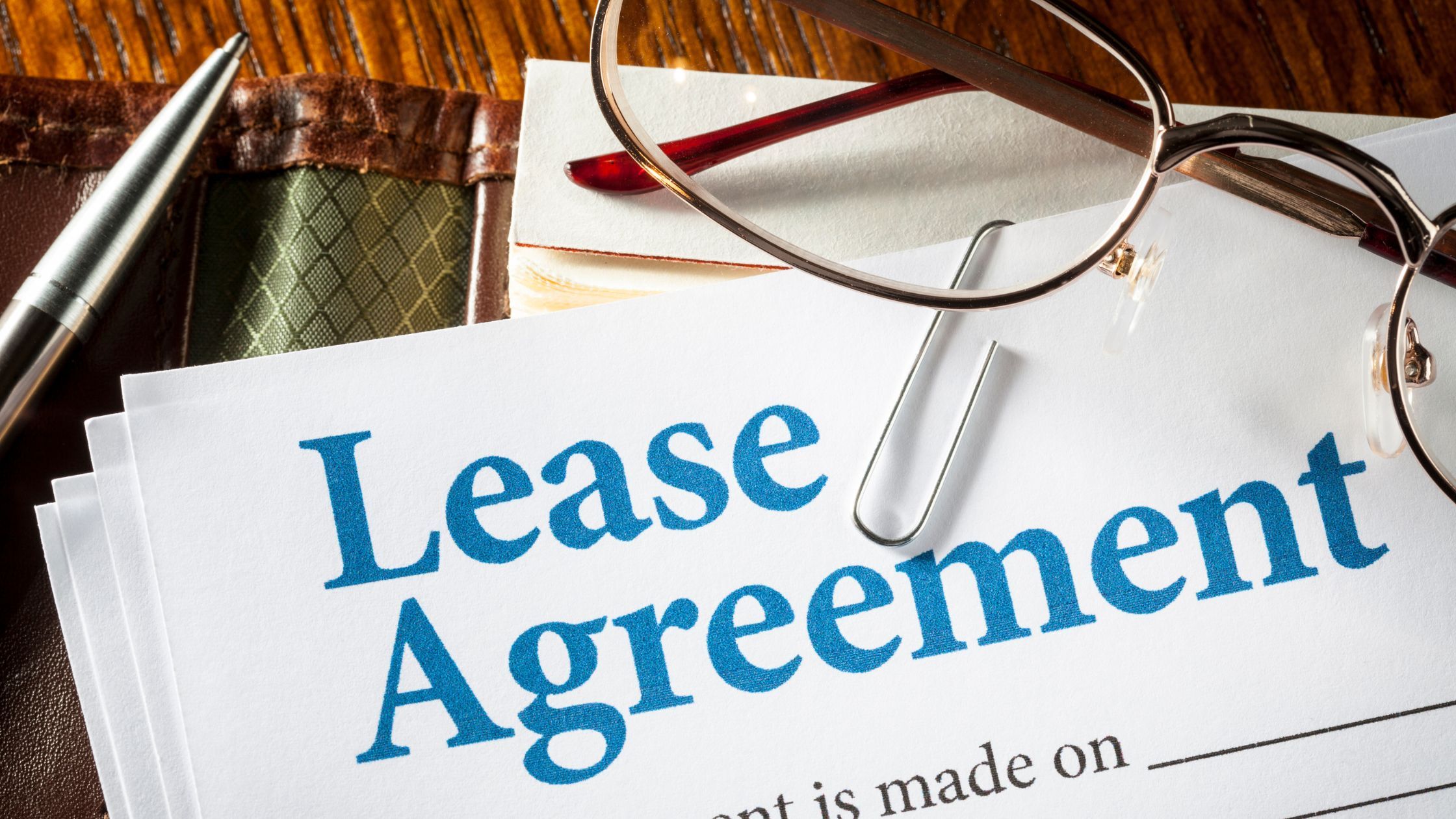Why AML Systems Are Critical in Conveyancing
Property transactions involve large sums and multiple parties, making them prime targets for money laundering. Buying real estate allows criminals to convert illicit cash into a relatively safe and stable asset, often with less immediate scrutiny than banking transactions. Without robust AML checks, a lender could unwittingly accept tainted funds as a deposit or collateral, exposing the institution to legal and reputational risks. Worse, undetected laundering through property undermines the integrity of the market and can fuel organised crime. For solicitors, the stakes are equally high: facilitating a transaction later proven to involve dirty money can lead to severe regulatory penalties or even criminal liability. Recent enforcement actions by the Solicitors Regulation Authority (SRA) underscore this point. In late 2024, the SRA fined eight law firms a total of £57,000 for “significant shortcomings” in AML controls, like failing to conduct mandatory client and matter risk assessments. Notably, one firm that specialised in conveyancing had no firm-wide risk assessment or documented checks for years, despite conveyancing being “highly susceptible” to money laundering risk. These cases illustrate how gaps in a firm’s AML system can have serious consequences and why lenders must be confident that their solicitors are not the weak link in the chain. In short, robust AML systems are not just a regulatory box-tick, they protect both the financial system and the individual transaction from abuse.
Common Weaknesses and Vulnerabilities in Property Transactions
Even with stringent regulations on the books, in practice certain AML weak spots crop up repeatedly in conveyancing. Recognising these vulnerabilities is the first step to addressing them. The SRA’s inspections and reports have flagged several common compliance failures in law firms’ AML processes. Some of the most prevalent issues include:
- Inadequate AML policies or “tick-box” procedures: Firms sometimes rely on off-the-shelf policies that are not tailored to their risk profile, leading to a false sense of security.
- Poor risk assessments: Many failures stem from not conducting proper risk assessments at both firm-wide level and on each client/matter. If a conveyancer isn’t thoughtfully assessing the risk factors (such as a client’s background or a complex corporate ownership structure), they may miss red flags.
- Flawed identity verification: Weak ID checks remain a major vulnerability. Inadequate client identification and verification was cited as a common breach by the SRA. Fraudsters can exploit lax ID processes to impersonate legitimate parties or use straw buyers.
- Failure to check source of funds: This is a critical lapse that directly enables money laundering. Too often, solicitors have accepted purchase monies without adequately verifying where the funds come from, whether the savings are legitimate, or if a third party is providing money from questionable sources. Skipping source-of-funds checks means missing the very information that might reveal criminal finance.
- Lack of training and ongoing monitoring: Some firms do the initial ID checks but then have “little-to-no ongoing monitoring of transactions”. Staff may not be trained to spot red flags as a matter progresses (for example, a sudden change in the funding arrangement or an unusual payment route). Without continuous vigilance, suspicious patterns like funds cycling through multiple client accounts can go unnoticed.
- Outdated procedures: AML is not a “set and forget” task. Yet regulators found that many firms weren’t reviewing or updating their AML policies annually as required. In a fast-evolving risk environment, stale protocols can quickly become unfit for purpose.
It’s telling that conveyancing has been highlighted as the highest risk area for AML failures in legal practice. Property lawyers handle transactions that are attractive to criminals, so any weaknesses be it a complacent culture or clunky processes will be probed by those looking to exploit the system. For lenders, these weak points in a solicitor’s practice translate into direct risk for your business. If a solicitor on your panel isn’t conducting proper due diligence, the illicit finance could slip through and later entangle the lender in costly investigations or enforcement actions.
What Lenders Should Expect from Panel Solicitors
Lenders rely on panel solicitors as gatekeepers during mortgage and property transactions. It is entirely reasonable indeed necessary for lenders to set clear expectations that their legal partners rigorously adhere to AML protocols at every step. Based on both regulatory requirements and industry best practice, here are key expectations lenders should have for any firm acting on their behalf:
- of authentication. This means checking government IDs, corroborating details like addresses, and screening clients against sanctions and politically exposed persons (PEP) lists. With today’s technology, there's many firms now use secure e-ID verification platforms that comply with HM Land Registry’s Digital Identity Standard for conveyancers, providing a “Safe Harbour” if they meet stringent biometric and cryptographic checks. Lenders should expect no less than robust digital or in-person ID vetting to ensure “the client is who they claim to be”.
- Source-of-Funds and Wealth enquiries: A diligent solicitor will go beyond identity and examine where the money in the deal is coming from. Lenders should insist that their solicitors obtain evidence of funds (bank statements, proof of savings, gift letters for any third-party gifts, etc.) and scrutinise unusual or large transactions in the client’s accounts. If, for example, a first-time buyer’s deposit appears suddenly in their account from an unrelated third party, the solicitor should flag that and seek explanations (and potentially file a Suspicious Activity Report). The lender’s expectation is that no funds get to the completion stage without this vetting, thereby protecting the loan from being part of a laundering scheme.
- Robust internal AML controls and records: Lenders should only work with law firms that can demonstrate a strong internal compliance framework. This includes having up-to-date, tailored AML policies and firm-wide risk assessments, regular staff training, and an independent audit function to periodically test their procedures. The SRA now requires firms to document such measures, and it has penalised those that didn’t – for instance, firms have been fined for not even having a written firm-wide risk assessment or for neglecting ongoing monitoring of client transactions. A lender should expect its solicitors to actively maintain AML records on each matter (ID documents, risk rating, checks made, etc.), and to be ready to certify that all required checks were done properly when requested. Essentially, panel firms must “show their work” in AML compliance, not just pay lip service.
- Compliance with industry and regulatory standards: Beyond the basic law, solicitors should follow guidance from bodies like the Law Society and SRA on best practices. Lenders can reference the UK Finance Mortgage Lenders’ Handbook (which panel firms are obligated to follow) it reinforces many AML expectations such as verifying the borrower’s identity and reporting any discrepancies. In fact, failure to act in accordance with the Lenders’ Handbook contributed to a solicitor’s discipline in a recent SRA case, highlighting that these guidelines carry real weight. Lenders should remind their legal partners that compliance with the Handbook’s AML provisions (e.g. not accepting funds from unverified sources, abiding by undertakings, etc.) is a condition of being on the panel.
- Alternates and communication around red flags; While tipping off a client is prohibited, panel solicitors should still have a channel to communicate with the lender if something doesn't look right, for example, if a client's behaviour raises suspicion or if there are funding anomalies. Lenders should encourage their lawyers to ask questions and seek clarification if any instruction seems irregular (such as a request to send surplus funds to a third-party post completion). Moreover, if a solicitor must pause a transaction due to an ongoing AML investigation or having submitted a Suspicious Activity Report, the lender should expect prompt notification that there's a regulatory hold-up (without detailing the SAR). In essence, lenders and solicitors must work in tandem to ensure suspicious activity is either resolved or stopped before any loan is advanced. A transparent, trust based relationship will help here, the solicitor should feel confident to raise potential issues, and the lender should be ready to support further due diligence or even abort a deal if laundering risk looms large.
By setting these expectations clearly (and enforcing them through panel terms and audits), lenders not only protect themselves but also empower their legal partners to act decisively against financial crime. When a solicitor knows their lender client prioritises AML compliance as much as speed of completion, they will be more likely to take the necessary cautious approach on risky transactions. Ultimately, the cost of a delayed or lost deal is nothing compared to the fallout of facilitating money laundering, which can include regulatory fines, reputational damage, and even criminal charges.
Emerging Trends Shaping AML Compliance
bringing both opportunities and challenges. Finance professionals should be aware of the following developments that are reshaping how lenders and law firms approach AML in conveyancing:
- Digital Onboarding and e-ID Verification: The pandemic and technology boom have accelerated a shift to digital client onboarding in legal services. Many conveyancers now use sophisticated identity verification apps that allow clients to prove their ID remotely using biometrics (for example, scanning passports and faces via smartphone). This digital-first approach can enhance security if done right, it reduces human error in spotting fake IDs and taps into databases to flag high-risk individuals. It also improves client experience, as noted by HM Land Registry when launching its Digital ID Standard (clients no longer need to visit offices with paper documents). However, digital onboarding comes with caveats: firms must ensure any tech provider they use is reliable and compliant and be vigilant to new fraud techniques like deepfake IDs or hackers attempting to spoof email communications. Overall, embracing digital ID tools is a positive trend that lenders should encourage among their panel firms, as it leads to more consistent and auditable checks. We are moving toward a future where electronic verification is the norm, and those still relying solely on photocopied passports and utility bills will be left behind – and possibly more exposed to fraud.
- Evolving Fraud Risks in Property Deals: With more processes online and large sums at stake, fraudsters continue to target the conveyancing process. One risk on the rise is impersonation fraud, where criminals use stolen identities to either hijack an owner’s property or pose as a buyer to launder money. Without rigorous ID checks, a law firm could unknowingly facilitate a sale for an impostor, a nightmare scenario for all involved. Similarly, “Friday afternoon” scams (where criminals intercept emails and trick solicitors or buyers into sending funds to the wrong account) are a constant threat; while not classic money laundering, they often overlap with organised crime moving illicit funds. Lenders and solicitors are responding by adopting secure communication portals and dual verification for payment instructions to thwart such schemes. Another trend is the use of complex corporate structures or overseas companies in purchases – which can obscure the true buyer. This is where new measures like the Register of Overseas Entities (introduced in 2022) come into play, requiring foreign-owned companies to disclose their beneficial owners before buying UK property. Solicitors must now verify a client’s compliance with this register, adding a new checkpoint in the AML process. The key takeaway for lenders is that fraud and AML risks are converging; you should expect your legal partners to stay ahead of both, whether it’s by validating a company’s registration number or calling a client to confirm bank details verbally. Each added step against fraud ultimately reinforces the AML framework as well.
- Heightened Regulatory Scrutiny and Guidance: Regulators are increasingly unsparing in their oversight of AML compliance in the legal sector – a trend that directly impacts lenders’ confidence in their panels. The SRA has ramped up enforcement and transparency. Its annual AML reports reveal that only about one-third of inspected law firms were fully compliant, and roughly 19% were outright non-compliant, triggering enforcement actions. The SRA’s fining powers were significantly increased in 2022 (from a £2,000 maximum to £25,000), meaning it can and will levy heavier penalties for AML failures. It has also introduced fixed fines for minor breaches to expedite discipline. On top of that, regulators have been conducting more frequent spot checks, audits, and even data collection exercises – in 2024 the SRA required all firms it supervises to submit detailed AML compliance data for review, signalling that no firm is invisible. At the same time, official guidance is evolving: the Legal Sector Affinity Group (LSAG) updated its comprehensive AML Guidance for the legal sector in April 2025, incorporating new expectations around issues like verifying beneficial owners and even mandating that larger firms register for the Economic Crime Levy. The SRA and Law Society have also been publishing regular guidance on emerging risks (for example, recent notices on adhering to financial sanctions regimes). For lenders, this wave of regulatory activity is a positive trend – it means the solicitors you work with are under pressure to up their game. Lenders should stay informed about such developments too. If the SRA issues a warning notice or new guideline, it’s wise for lender compliance teams to digest that and perhaps discuss with panel firms how they are implementing any changes. Ultimately, regulatory scrutiny acts as both a carrot and stick: it punishes laggards but also provides clearer standards that all parties can follow to strengthen AML defences.
Practical Steps for Lenders and Legal Partners
Considering the above, what can lenders do to enhance coordination with their solicitors and collectively bolster AML effectiveness? Here are some actionable recommendations for financial institutions to consider:
- Select and Vet Panel Firms Carefully: Treat the appointment of panel solicitors as a critical compliance decision, not just a commercial one. Perform due diligence on law firms’ AML track records – for instance, ensure they have no recent SRA sanctions for AML breaches and that they hold relevant accreditations (such as the Law Society’s Conveyancing Quality Scheme, which has AML elements). It’s worth asking prospective panel firms about their AML systems: Do they have a dedicated compliance officer? What training do they mandate? Which electronic ID and source-of-funds tools do they use? By choosing firms with a strong compliance culture, lenders reduce the risk of weak links in the process from the start.
- Clearly Communicate Expectations: Once you have your panel in place, be explicit about what you expect on every transaction. This could be via a formal panel handbook or service level agreement that mirrors your own standards. Emphasise that all anti-money laundering regulations and guidance must be strictly followed and highlight any policies important to you (for example, “no funds to be accepted from jurisdictions on our high-risk list without prior approval”). Provide your panel with updates on typologies or red flags you’re seeing from the banking side, for instance, if your fraud team notices an uptick in forged documents or scam trends, share that intel with the lawyers. The more your solicitors understand your perspective, the better they can align their checks. Regular meetings or newsletters can reinforce these expectations and keep AML front-of-mind.
- Enable Information Sharing (Within Legal Bounds): Establish protocols for two-way communication on AML concerns during a transaction. Lenders should designate a point of contact for solicitors to raise potential issues confidentially. For example, if a solicitor suspects that a borrower’s deposit might be laundered money, they should know whom to call at the bank to discuss holding the transaction (while the solicitor handles formal reporting to authorities). Likewise, if a bank’s due diligence flags something (perhaps the client is on a watchlist or there are unusual account activities), having a direct line to the conveyancer can be invaluable. By coordinating, the lender and lawyer can decide on a unified response, whether that means seeking further documentation or aborting the deal. Of course, both must be mindful of tipping off laws and client confidentiality, but a well-structured communication plan can navigate these issues (for instance, using coded language or simply indicating a “regulatory review” pause). The bottom line is that silos help only the launderers; collaboration is key to stopping suspicious deals in their tracks.
- Leverage Technology and Unified Tools: Consider adopting platforms that allow secure document and data sharing between lenders and solicitors for KYC/AML purposes. Some forward-thinking lenders provide their panel firms with access to validation tools or databases, for example, joint use of an open-banking based source-of-funds analysis tool can ensure both the bank and the lawyer see the same transaction history of the client, making it easier to spot inconsistencies. Similarly, secure communication portals (as opposed to regular email) can be used for exchanging sensitive information like identification documents or bank details, reducing the risk of interception or tampering. By investing in compatible technology, lenders and law firms can create a more seamless AML process, where each party isn’t working off isolated systems or duplicate checks. This not only improves efficiency (no one wants to ask the client for the same documents twice) but also means that red flags are less likely to slip through the cracks.
- Joint Training and Continuous Improvement: Finally, foster a partnership approach to AML by engaging in joint training or workshops with your panel solicitors. Inviting law firms to attend a webinar hosted by your compliance team on emerging money laundering threats, or conversely, having your lender staff sit in on a Law Society AML update alongside your lawyers, can build mutual understanding. Some lenders even conduct annual review meetings with each panel firm to go over any issues from past transactions, this is an opportunity to give feedback (e.g. "We noticed on case X, the source of funds check missed a red flag caught by our team, let's discuss how to improve coordination") and to hear from solicitors what challenges they face in meeting your requirements. treat the relationship as a two-way street: encourage panel firms to voice concerns if, say, your processes inadvertently pressure them to cut corners (tight completion deadlines etc.), so you can address those pressures. By continuously learning together and iterating on processes, lenders and their legal partners can stay one step ahead of savvy launderers.
In conclusion, robust AML systems in conveyancing are a shared responsibility, the demand diligence from solicitors on the front line and full support from lenders, who entrust them with handling funds and documents. The cost of weak AML is simply too high, as seen in fines, ruined reputations, or, worse criminals escaping justice. But with clear expectations, smart use of technology, and close collaboration, lenders and lawyers can form a united front to keep property transactions, clean. In the current climate of heightened regulatory scrutiny and sophisticated financial crime, such unity isn't just advisable; it is essential. By bolstering anti-money laundering defences together, we protect not only our businesses but the integrity of the UK property market itself – ensuring it remains a place for homes and investments, not a haven for dirty money.
By Nathan J. Hennah, COLP & COFA, Hennah Haywood Law
Sources:
- Transparency International UK – Overseas Territories pumping almost £6bn of dirty money into UK property
- Solicitors Regulation Authority – Fines for AML Failures (Nov 2024)
- >span class="NormalTextRun SCXW64566740 BCX4">Common AML Breaches and SRA Warnings (2023)
- SRA Disciplinary Case: Solicitor acting contrary to Lenders’ Handbook
- HM Land Registry – Digital Identity Standard for Conveyancing
- Legal Sector Affinity Group – AML Guidance Update (Apr 2025)



































